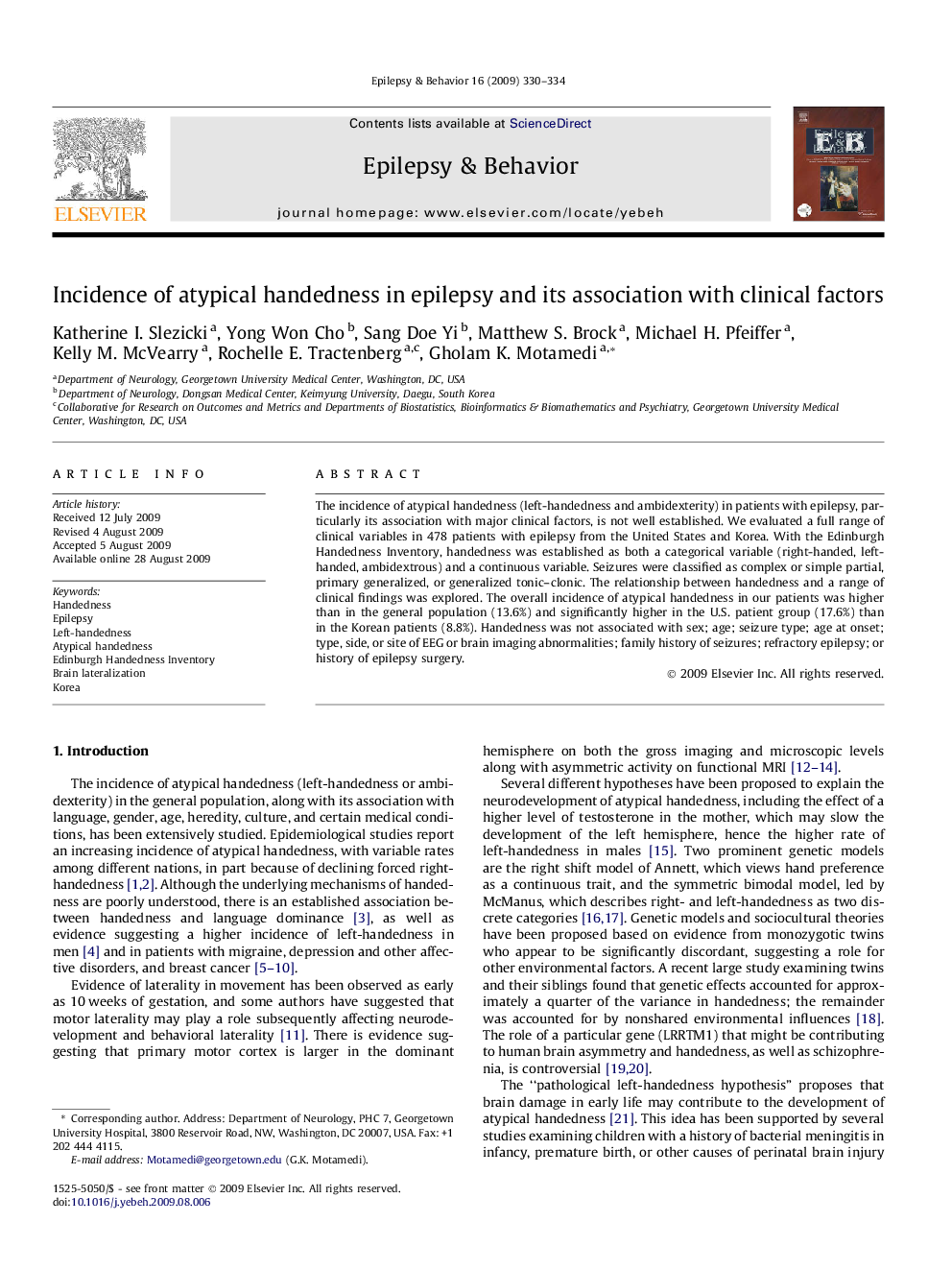| Article ID | Journal | Published Year | Pages | File Type |
|---|---|---|---|---|
| 3050045 | Epilepsy & Behavior | 2009 | 5 Pages |
The incidence of atypical handedness (left-handedness and ambidexterity) in patients with epilepsy, particularly its association with major clinical factors, is not well established. We evaluated a full range of clinical variables in 478 patients with epilepsy from the United States and Korea. With the Edinburgh Handedness Inventory, handedness was established as both a categorical variable (right-handed, left-handed, ambidextrous) and a continuous variable. Seizures were classified as complex or simple partial, primary generalized, or generalized tonic–clonic. The relationship between handedness and a range of clinical findings was explored. The overall incidence of atypical handedness in our patients was higher than in the general population (13.6%) and significantly higher in the U.S. patient group (17.6%) than in the Korean patients (8.8%). Handedness was not associated with sex; age; seizure type; age at onset; type, side, or site of EEG or brain imaging abnormalities; family history of seizures; refractory epilepsy; or history of epilepsy surgery.
